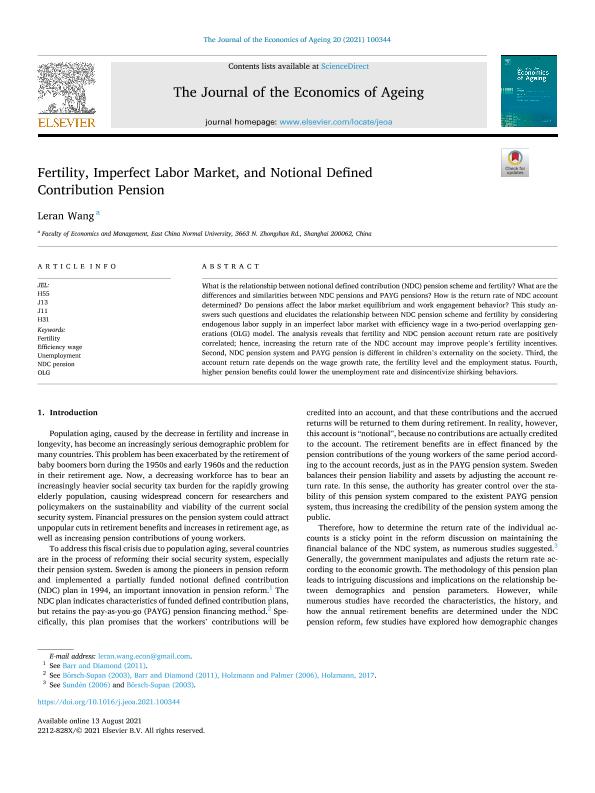Fertility, Imperfect Labor Market, and Notional Defined Contribution Pension

Contenido multimedia no disponible por derechos de autor o por acceso restringido. Contacte con la institución para más información.
| Tag | 1 | 2 | Valor |
|---|---|---|---|
| LDR | 00000cab a2200000 4500 | ||
| 001 | MAP20210032875 | ||
| 003 | MAP | ||
| 005 | 20211117142324.0 | ||
| 008 | 211117e20211011gbr|||p |0|||b|eng d | ||
| 040 | $aMAP$bspa$dMAP | ||
| 084 | $a40 | ||
| 100 | 1 | $0MAPA20210035821$aWang, Leran | |
| 245 | 1 | 0 | $aFertility, Imperfect Labor Market, and Notional Defined Contribution Pension$cLeran Wang |
| 520 | $aWhat is the relationship between notional defined contribution (NDC) pension scheme and fertility? What are the differences and similarities between NDC pensions and PAYG pensions? How is the return rate of NDC account determined? Do pensions affect the labor market equilibrium and work engagement behavior? This study answers such questions and elucidates the relationship between NDC pension scheme and fertility by considering endogenous labor supply in an imperfect labor market with efficiency wage in a two-period overlapping generations (OLG) model. The analysis reveals that fertility and NDC pension account return rate are positively correlated; hence, increasing the return rate of the NDC account may improve people's fertility incentives. Second, NDC pension system and PAYG pension is different in children's externality on the society. Third, the account return rate depends on the wage growth rate, the fertility level and the employment status. Fourth, higher pension benefits could lower the unemployment rate and disincentivize shirking behaviors. | ||
| 650 | 4 | $0MAPA20080552114$aPensiones | |
| 650 | 4 | $0MAPA20080586300$aMercado de trabajo | |
| 650 | 4 | $0MAPA20080616533$aContribuciones especiales | |
| 773 | 0 | $wMAP20210010194$g11/10/2021 Volumen 20 - 2021 , 15 p.$tThe Journal of the economics of ageing $dOxford : Elsevier ScienceDirect, 2021- |

